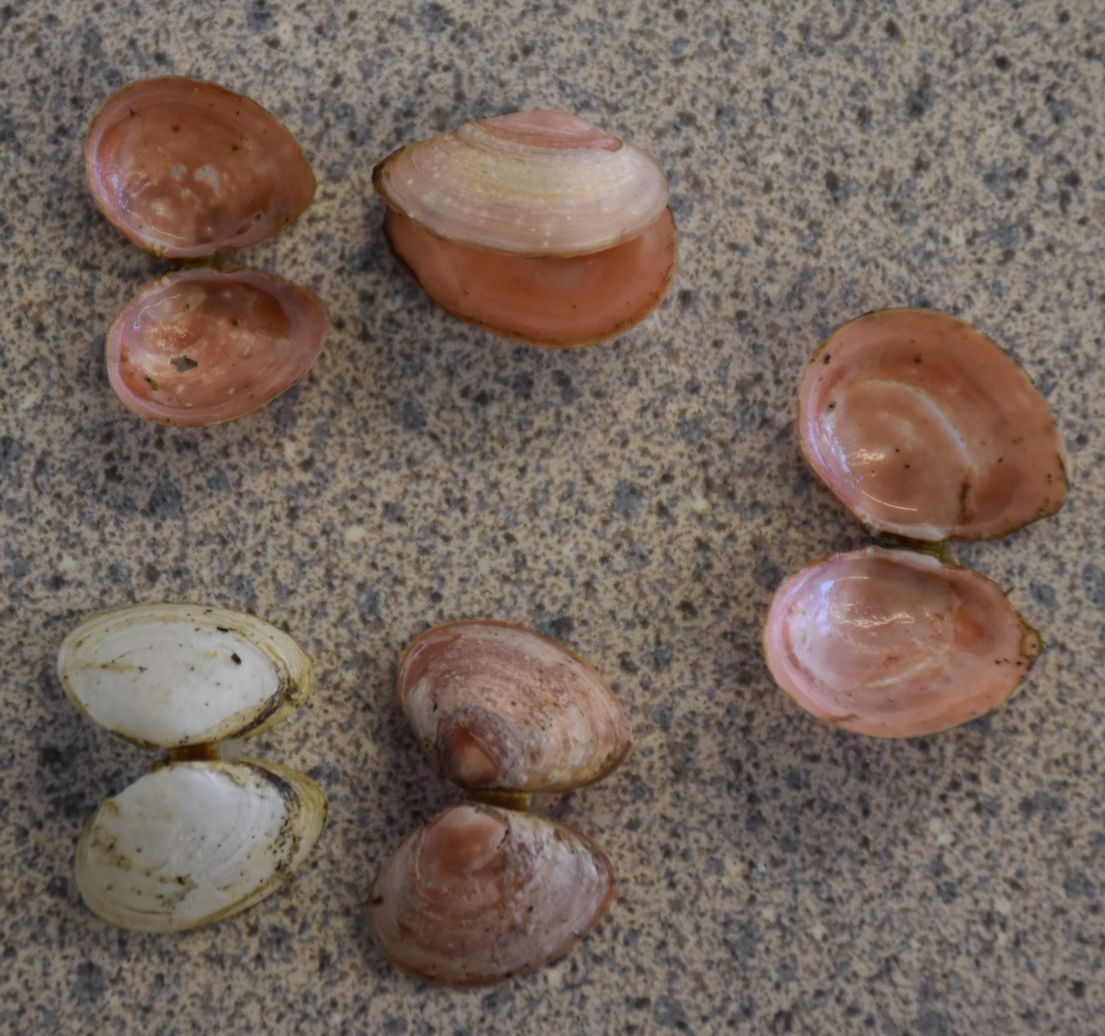Description: Like all members of family Tellinidae, this clam has a rounded shell with neither valve very flat nor very inflated, and the anterior and posterior ends are shaped differently. There are two adductor muscle scars of similar size on each valve. The umbones are near the middle of the dorsal side. It has no radial ribs. The hinge has a true hinge plate with two cardinal teeth on both valves. The hinge ligament is mostly external. The valves have a pallial sinus and a continuous pallial line and gape only slightly, if at all, at the posterior end. The siphons are long and separate. Macoma balthica is an intertidal and subtidal species which, like other Macomas, has no lateral teeth on its hinge plate. The clam is asmall and lmost perfectly oval with both the anterior and posterior ends well-rounded. The shell is up to about 2 (3) cm long (but usually less than 1.5 cm in our area) and is much less than twice as long as high. The umbo is near the middle and the hinge ligament is at least 1/3 the length from the umbones to the posterior end. The periostracum on the valves is not polished or transparent, and the posterior end of the valves do not bend slightly to the right. The valves often have a yellow, pink, or bluish tint as seen here
I offer my thanks to Linda Schroeder of the Pacific Northwest Shell Club for help confirming the identification of this clam..
Note: The original Macoma balthica of the Arctic and North Atlantic ocean has been renamed Limecola balthica, according to marinespecies.org. The species previously identified as Macoma balthica in San Francisco Bay has now been recognized as Macoma petalum (which is also found in the North Atlantic American coast), but no morphological differences between the two species have been specified. It is thought to have been brought to the Pacific coast by oyster farming.
How to Distinguish from Similar Species:Macoma yoldiformis is about twice as long as high. Macoma inquinata has a distinctly narrower posterior end than anterior end and the shell is white. Macoma nasuta bends to the right and has a white shell which is often larger than 2 cm. Macoma expansa also grows larger and has an "inflated" appearing shell. Tellina clams have lateral teeth on the hinge.
Geographical Range: In the arctic and north temperate Pacific and Atlantic oceans.
Depth Range: Intertidal down to 25 m.
Habitat: Muddy sand
Biology/Natural
History: This clam
burrows only shallowly into the substrate.
| Return to: | |||
| Main Page | Alphabetic Index | Systematic Index | Glossary |
References:
Dichotomous Keys:Kozloff, 1987, 1996
General References:
Kozloff 1993
Scientific Articles:
Web sites:
General Notes and Observations: Locations, abundances, unusual behaviors:

The pallial sinus is deep. Photo by Dave Cowles, July 2020
Authors and Editors
of Page:
Dave Cowles (2020): Created original page
CSS coding for page developed by Jonathan Cowles
Salish Sea Invertebrates web site provided courtesy of Walla
Walla University
